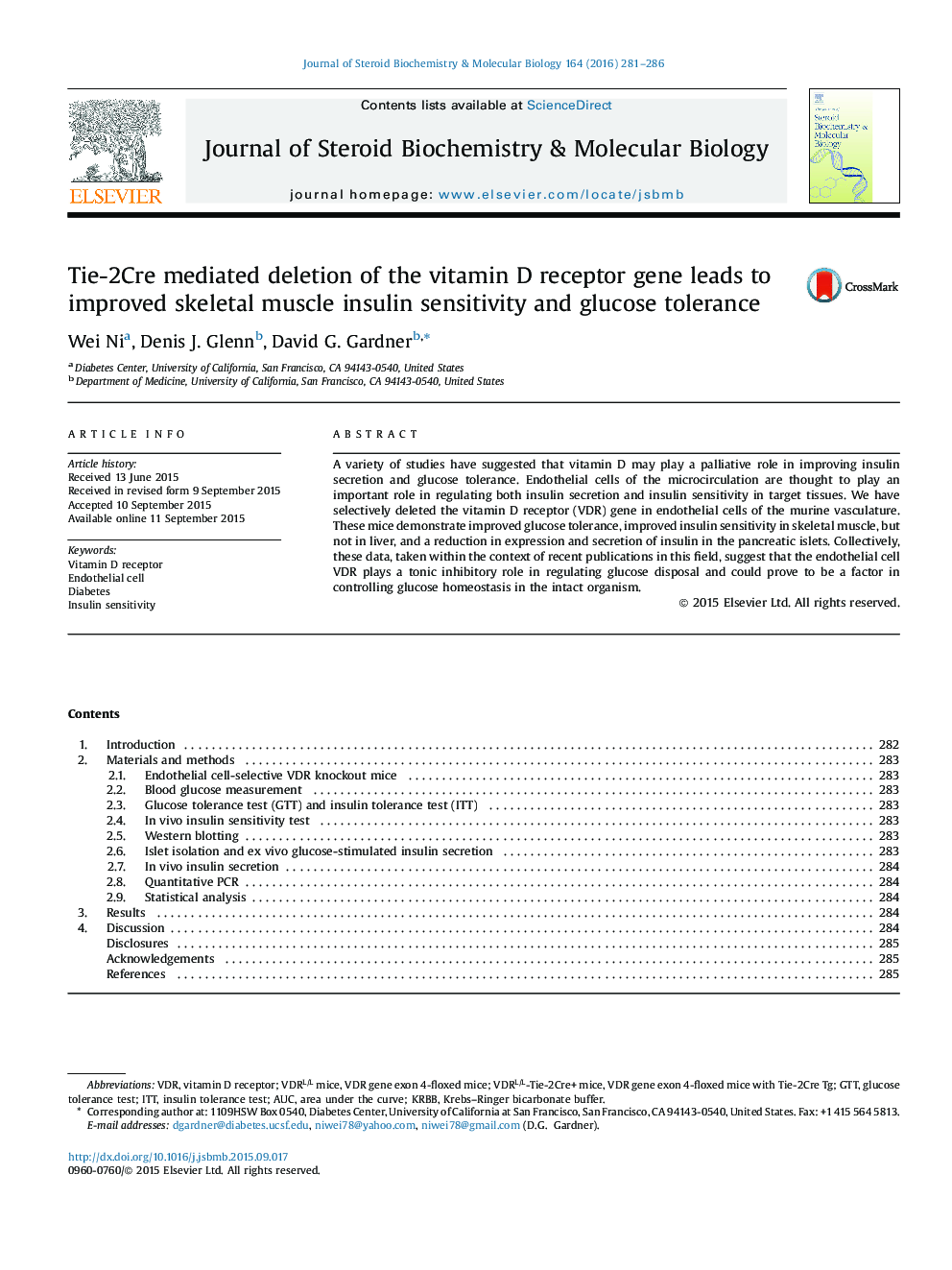| Article ID | Journal | Published Year | Pages | File Type |
|---|---|---|---|---|
| 5513260 | The Journal of Steroid Biochemistry and Molecular Biology | 2016 | 6 Pages |
â¢We found improved glucose disposal in Tie-2Cre-mediated endothelial/macrophage VDR KO mice.â¢Improvement in glucose disposal is due to increased insulin sensitivity in skeletal muscle not in liver.â¢Reduced insulin secretion is likely secondary to improved insulin sensitivity.
A variety of studies have suggested that vitamin D may play a palliative role in improving insulin secretion and glucose tolerance. Endothelial cells of the microcirculation are thought to play an important role in regulating both insulin secretion and insulin sensitivity in target tissues. We have selectively deleted the vitamin D receptor (VDR) gene in endothelial cells of the murine vasculature. These mice demonstrate improved glucose tolerance, improved insulin sensitivity in skeletal muscle, but not in liver, and a reduction in expression and secretion of insulin in the pancreatic islets. Collectively, these data, taken within the context of recent publications in this field, suggest that the endothelial cell VDR plays a tonic inhibitory role in regulating glucose disposal and could prove to be a factor in controlling glucose homeostasis in the intact organism.
